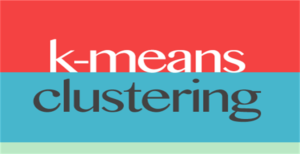Image source: prnewswire.com
Technological advancements have changed the mode of learning and replaced traditional schools with virtual classes or online-learning. The K-12 education system has incorporated online programs and resources for both public schools and homeschooling. The K-12 online system provides extensive learning and prepares students at various grades for tertiary education through step by step process. Let’s have a look at the pros and cons of online learning to determine whether is good or not.
Pros:
1. Self-paced learning: In online learning, the student can learn at their own pace, spend more time on challenging subjects, and receive individual teacher attention.
2. Cost-effective: Online learning is a cost-effective alternative to traditional learning methods. No payment for expensive schools or textbooks.
3. Flexible: It provides a flexible mode of learning to the students. Students can access learning modules anytime at the comfort of their home.
4. Variety of options: Students can have access to various options like access to makeup courses, additional electives classes or advanced placement classes which would otherwise be unavailable.
5. Better performance: Online learning provides students up to 12th grade with high-quality online education solution and help them thrive in school and fully prepare for post-secondary education.
6. Build children capacity: The K12 learning resources are structured with enough content for each grade and equip students with the information they need to make independent decisions on matters affecting their lives.
7. Breakdown education into stages: The education system is broken down into components for various grade students making it easy for the students to understand and grab knowledge at each stage of the education.
8. Increased opportunities: Online learning school offer enrichment programs to students like music, art, computer classes among others which are not available in traditional schools.
9. Availability of learning resource: The student will be able to access learning tools and materials online, have live discussions, ask questions through online forums and chatrooms and receive an immediate response.
10. Individualized schedules: Online education allows the students to schedule classes based on their availability enabling them to have a comfortable learning environment.
Cons:
1. Affects child development: Kids need to interact with each other daily in the same setting and rules to enhance their development and be prepared for adulthood and sitting in front of the computer screen at home will not give them that.
2. Lacks one-on-one socialization: Online learning isolates a student within a single room and will not be able to have face to face interaction and exchange ideas with other students of their age. This can affect student social life.
3. Distraction: The student can easily be destructed by social media activities and sometimes may not concentrate on the online lesson especially if done privately.
4. Feel stressed: Some K12 online-learning institution offer too much work for the student without considering whether the student understands or not. This makes them a have hard time committing to completing the lesson on time.
5. Highly depends on technology: Online education requires a high-speed internet connection to attend virtual classes and download video tutorials from the teachers and if you have issues with internet or PC, you will miss the online lessons and deadlines.
6. Require a great deal of motivation: To succeed in the online environment, it requires a great deal of self-motivation and discipline since classes are flexible. It is upon you to make decisions on how to fit classes in your daily schedule otherwise you will fail.
7. Quality of education: Some online education systems do not provide quality education to students based on their grades. Some of them are money makers.
8. Lack of guidance: Online learning school does not offer a personal guide to students beyond the education curricula making it difficult for a student to get personal support and mentorship from those who inspire them.
9. No teacher present to assist student: If the student has a question, he has to wait when the teacher is online to assist them.
10. Lack of rigor: In traditional learning mode, students are challenged through questions by teachers or through brainstorming with other students and this is not the case with online learning.



